Unleash Your Team's Potential: Supercharge Brainstorming with AI
Struggling with unproductive brainstorming sessions? This list of the top 8 AI brainstorming tools will help your remote team generate innovative ideas and collaborate more effectively. Discover how these tools solve common brainstorming challenges and unlock your team's creative potential. From mind mapping with Milanote and Miro to leveraging the power of ChatGPT and Notion AI, we'll explore the best AI brainstorming tools available, including Bulby, Ayoa, Ideaflip, and Stormboard.
1. Bulby
Bulby stands out as a leading AI brainstorming tool, specifically designed to empower remote teams in generating and refining innovative ideas. Unlike traditional brainstorming sessions, Bulby leverages the power of artificial intelligence and research-backed creative cognition methods to facilitate a more inclusive, efficient, and insightful process. This makes it a valuable asset for remote startups, tech teams, and any group seeking to enhance collaboration and innovation in today's hybrid work environment. Bulby excels at facilitating productive sessions by providing a structured, step-by-step framework, making it easier for teams to stay on track and achieve tangible outcomes.
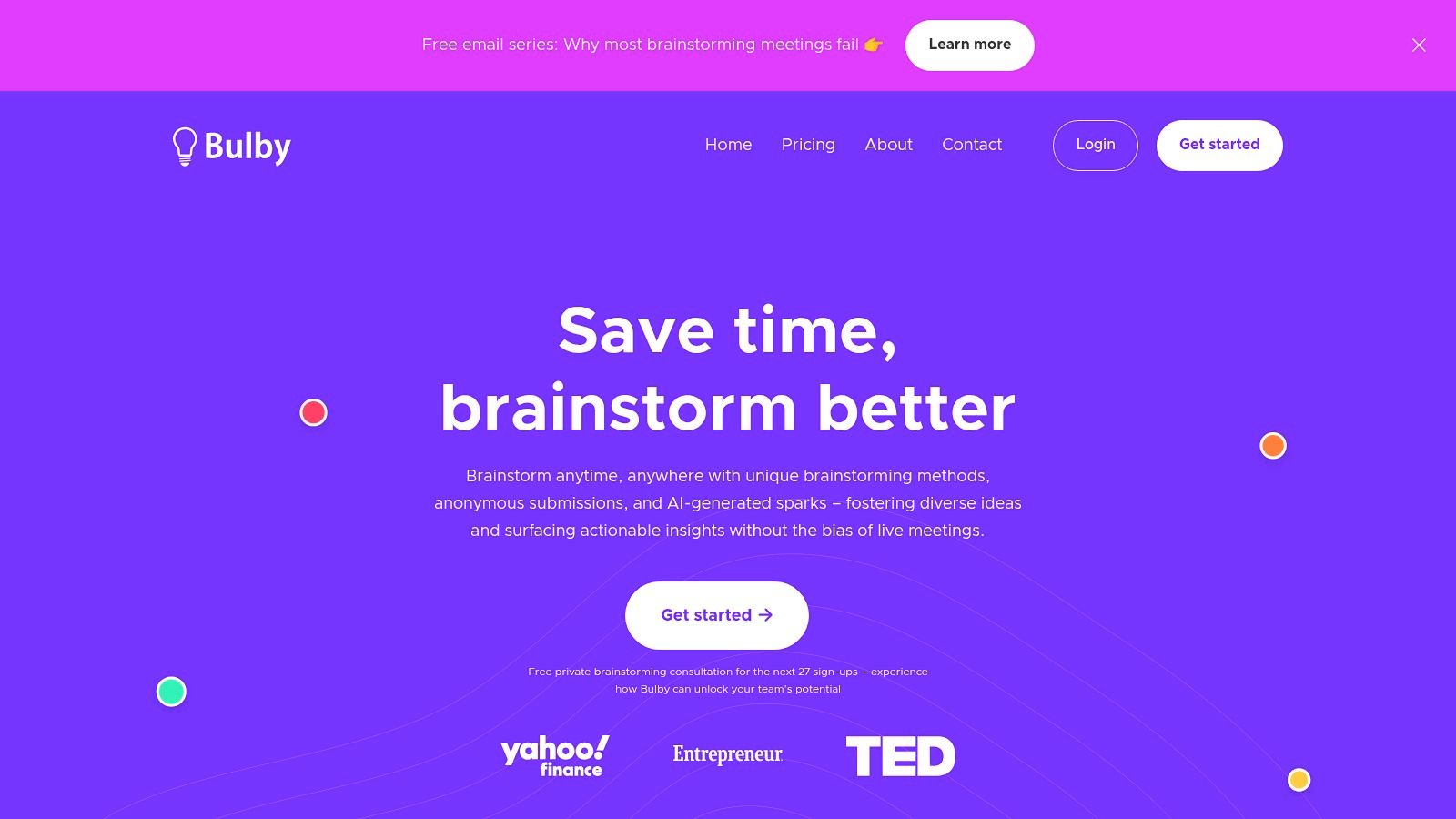
One of Bulby's key strengths lies in its ability to foster diverse thinking and overcome common brainstorming challenges. The platform incorporates anonymous submissions, effectively eliminating bias and encouraging participation from all team members, even the quieter voices. This anonymity combats the tendency for dominant personalities to steer the conversation, fostering a more balanced and equitable ideation process. Furthermore, Bulby tackles the issue of "groupthink" by introducing randomized exercises and AI-generated inspiration prompts. These features help break through creative blocks and encourage exploration of unconventional ideas, pushing teams beyond their usual thought patterns. Whether your team is tackling product development, devising marketing campaigns, or grappling with complex problem-solving, Bulby provides the structure and stimulus to generate truly innovative solutions.
For remote teams scattered across different time zones, Bulby's asynchronous capabilities are a game-changer. The platform facilitates seamless collaboration without requiring everyone to be online simultaneously. Team members can contribute their ideas at their own pace, ensuring maximum flexibility and inclusivity. This feature is particularly beneficial for global teams or those working on flexible schedules, fostering a more convenient and efficient brainstorming experience. This flexibility extends to solo brainstorming as well, allowing individuals to utilize the platform's AI-powered guidance and exercises to spark their own creativity.
Bulby's AI capabilities go beyond just facilitating idea generation. The platform automatically summarizes contributions, identifies key themes, and generates actionable insights through AI-powered reports. This streamlines the often tedious process of analyzing brainstorming output, enabling teams to quickly move from ideation to execution. These reports can be instrumental in prioritizing ideas, identifying potential roadblocks, and developing concrete action plans. This feature transforms the brainstorming process from a free-flowing discussion into a structured activity with tangible, measurable results.
While Bulby offers a compelling set of features for AI-powered brainstorming, there are a few aspects to consider. Pricing details beyond the 14-day free trial are not readily available on the website, requiring users to contact the company directly for team account pricing. This lack of transparency can be a hurdle for teams looking to quickly assess affordability. Additionally, Bulby's focus on digital collaboration makes it ideally suited for remote and digitally connected teams. Its benefits might be less pronounced for teams that primarily operate in a face-to-face setting.
Despite these considerations, Bulby's powerful combination of AI-powered guidance, structured exercises, and anonymous submissions makes it a valuable ai brainstorming tool for enhancing creativity and collaboration in remote teams. The platform’s ability to facilitate diverse thinking, overcome common brainstorming roadblocks, and generate actionable insights sets it apart. For remote startups, tech teams, and any organization embracing a hybrid work model, Bulby offers a robust solution for unlocking the full creative potential of their teams. The 14-day free trial and free private brainstorming consultation for early sign-ups provide an excellent opportunity to experience the benefits firsthand. You can learn more and sign up for the trial at https://www.bulby.com. Compared to more general brainstorming tools or relying solely on unstructured virtual meetings, Bulby provides a dedicated, tailored platform for maximizing the impact of your brainstorming efforts. This structured approach helps ensure that your team's brainstorming sessions are not just creative exercises, but productive activities that yield tangible, actionable results.
2. Milanote
Milanote stands out as an ai brainstorming tool specifically designed for visual thinkers and creative collaborators. It bridges the gap between traditional mind-mapping methods and AI-powered assistance, offering a flexible digital canvas for organizing ideas, images, notes, and tasks. This makes it particularly well-suited for remote teams, remote tech teams, and remote startups engaged in design, marketing, content creation, or any project requiring visual brainstorming and planning. Unlike linear note-taking apps, Milanote replicates the feel of a physical mood board, allowing users to arrange elements freely and visually connect related concepts. It's a powerful tool for sparking creativity and structuring complex projects in a way that resonates with visual learners.
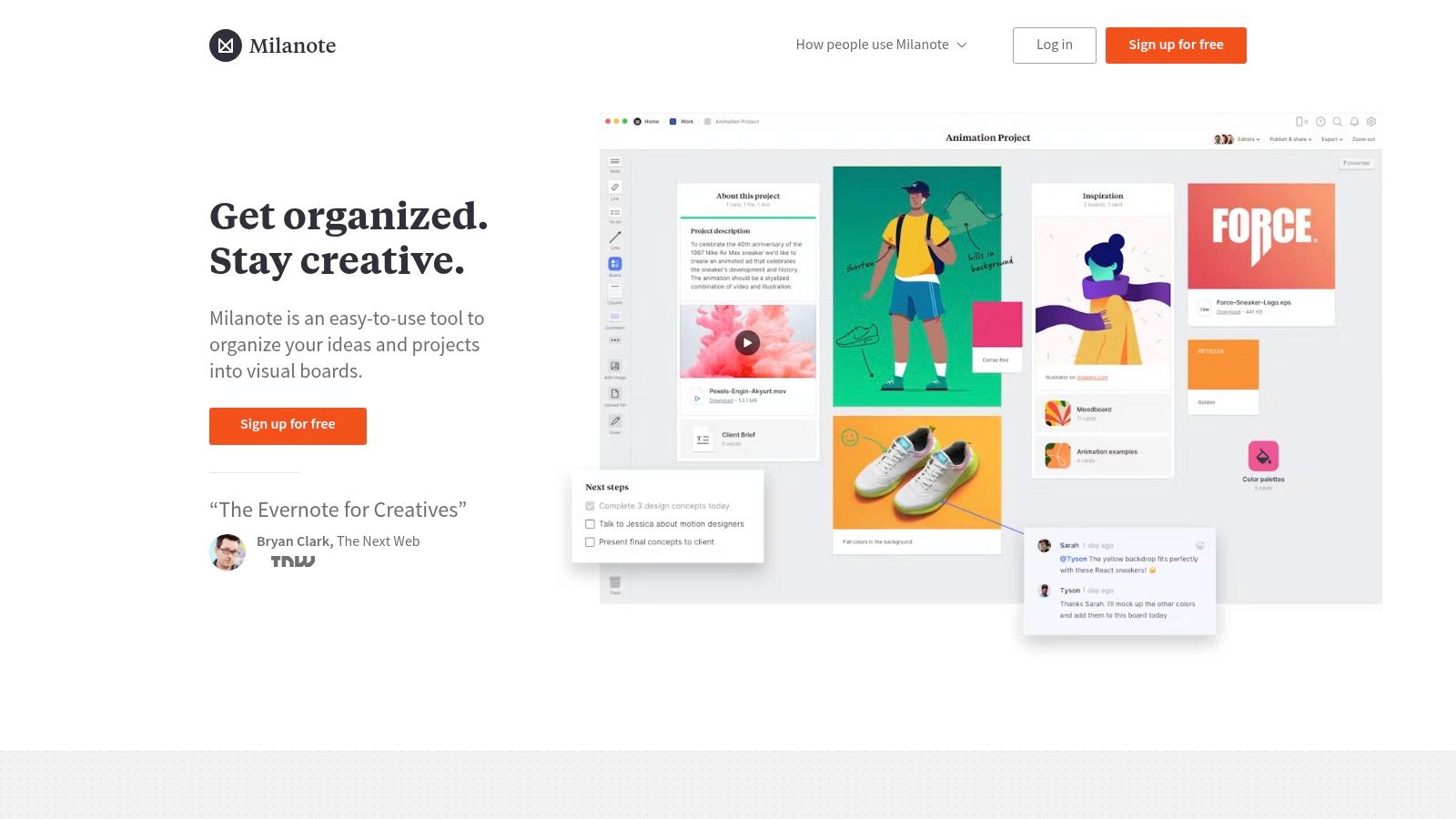
For remote tech teams, Milanote can be instrumental in visualizing system architectures, user interfaces, or user journeys. Imagine mapping out the flow of a new app feature using drag-and-drop elements, adding notes and annotations directly onto mockups, and then sharing this interactive board with the entire team for real-time feedback. This visual approach simplifies communication and ensures everyone is on the same page, regardless of their physical location. Remote startups can also benefit from Milanote's flexible structure, utilizing it for everything from brainstorming marketing campaigns to building brand identity mood boards. The collaborative features allow team members to contribute ideas asynchronously, maintaining momentum even across different time zones.
Milanote's AI features, while not as comprehensive as dedicated AI brainstorming tools, provide valuable support during the creative process. The platform offers AI-powered suggestions for content organization, helping users structure their boards effectively. Automated tagging further streamlines the brainstorming process by categorizing and linking related ideas. This is particularly helpful for larger projects where maintaining clarity and organization can become challenging. You can Learn more about Milanote and how it can boost idea generation within your business.
One of the key advantages of Milanote is its intuitive visual interface. Dragging and dropping elements, connecting them with lines, and adding multimedia content feels natural and encourages experimentation. This ease of use makes it a great option for teams with varying levels of technical expertise. The robust collaboration features, including real-time co-editing and commenting, are designed to facilitate seamless teamwork, especially crucial for remote teams. Integration with design software further enhances its appeal for creative professionals, enabling a smoother workflow between brainstorming and design execution.
However, Milanote does have some limitations. Its AI capabilities are less advanced than those found in specialized AI brainstorming tools. While it offers valuable assistance with organization and tagging, it doesn't provide features like AI-generated content or advanced idea generation prompts. For teams heavily reliant on AI-driven brainstorming, this might be a significant drawback. Additionally, Milanote boards can become cluttered with large projects, requiring careful management to maintain clarity. Finally, the pricing structure, while offering a free version with limited features, can become expensive for larger teams needing full access and functionality.
Milanote offers several pricing tiers. A free personal plan provides basic functionality with limitations on the number of boards and notes. Paid plans, ranging from approximately $9.99 to $49 per month (billed annually), unlock additional features, storage, and collaboration options for teams. Specific technical requirements are minimal, as Milanote is a web-based application accessible through most modern browsers. A desktop app is also available for macOS and Windows, offering offline access and enhanced performance.
Compared to similar tools like Miro or Mural, Milanote focuses more on the visual and aesthetic aspects of brainstorming, whereas Miro and Mural are more geared towards diagramming and workflow management. This makes Milanote a particularly strong choice for creative industries where visual presentation is paramount. Implementing Milanote within a team is straightforward. Start by selecting a relevant template from the extensive template library, which caters to various industries and project types. Then, invite team members to collaborate on the board, and begin brainstorming by adding notes, images, links, and other relevant content. Encourage team members to explore the different visual organization options, such as mind maps, mood boards, and kanban boards, to find the best fit for their project needs.
3. Miro
Miro is a powerful ai brainstorming tool that goes beyond the limitations of a traditional whiteboard. It offers a rich, collaborative online space where teams can brainstorm, plan, and visualize ideas together, regardless of their physical location. Miro stands out for its integration of AI features designed specifically to enhance the brainstorming process, making it an excellent choice for remote teams, tech teams, and startups seeking an innovative and efficient approach to idea generation. It's more than just a digital whiteboard – it's a dynamic workspace that fosters creativity and collaboration.
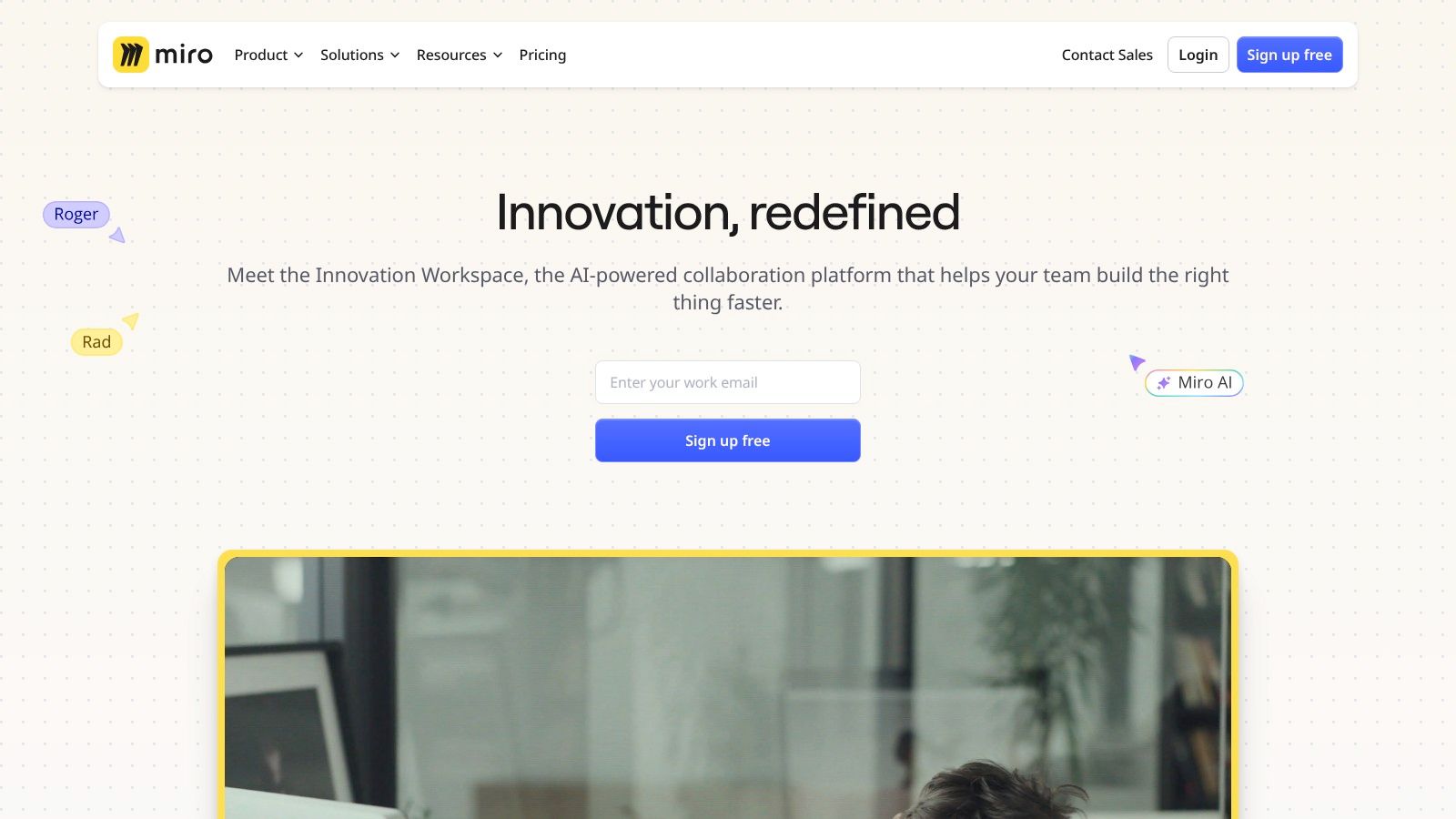
One of Miro's key strengths lies in its AI-powered features. These aren't just gimmicks; they actively assist the brainstorming process. For example, imagine a brainstorming session generating a flurry of ideas, each captured on a virtual sticky note. Instead of manually sorting through this jumble, Miro's AI-powered clustering automatically groups similar ideas together, revealing patterns and themes that might otherwise be missed. This feature saves valuable time and ensures that no valuable insight gets lost in the noise. Additionally, Miro offers sentiment analysis, providing insights into the emotional tone of the ideas generated. This can be particularly valuable when brainstorming solutions to complex problems, helping teams understand the underlying feelings and perspectives associated with each idea. The AI also assists with automatic idea categorization, further streamlining the organization and analysis of brainstorming output.
Beyond its AI capabilities, Miro provides an infinite canvas whiteboard, making it ideal for large-scale brainstorming sessions with numerous participants. Pre-built brainstorming templates cater to various methodologies like mind mapping, SWOT analysis, and user story mapping, ensuring that teams can hit the ground running with a structured approach. Real-time collaboration for unlimited users allows everyone to contribute simultaneously, regardless of their location. This promotes a sense of shared ownership and ensures that everyone's voice is heard. Moreover, Miro’s extensive integration ecosystem, with compatibility with over 100 apps like Slack, Google Drive, and Microsoft Teams, seamlessly connects your brainstorming sessions with the tools your team already uses.
For remote teams, the benefits of using Miro as an ai brainstorming tool are significant. You can conduct effective brainstorming sessions without needing everyone in the same physical space. Learn more about Miro and other tools that facilitate virtual brainstorming. This is particularly crucial for distributed teams or companies embracing a hybrid work model. The platform promotes inclusivity, enabling everyone to contribute equally, regardless of location. The visual nature of the whiteboard enhances engagement and facilitates a shared understanding of the ideas being discussed.
Miro offers a free plan with limitations on the number of editable boards, along with paid plans that unlock additional features and storage. The specific pricing varies depending on the number of team members and the desired features. Technical requirements are minimal, primarily needing a stable internet connection and a compatible web browser.
While Miro is a powerful ai brainstorming tool, it's important to be aware of some potential drawbacks. For beginners, the sheer breadth of features and the infinite canvas can feel overwhelming. It may take some time to familiarize yourself with the platform's functionalities and navigate the interface effectively. While the AI features are promising, they are still under development, and their capabilities may evolve over time. Finally, like any web-based application, Miro requires an internet connection to function.
To get started with Miro, consider beginning with one of the pre-built brainstorming templates. This provides a structured framework for your session and helps you familiarize yourself with the platform's features. Experiment with different AI-powered functionalities, such as idea clustering and sentiment analysis, to see how they can enhance your brainstorming process. Encourage active participation from all team members and integrate Miro with other tools in your workflow to streamline your process.
In comparison to other ai brainstorming tools like Stormboard or Mural, Miro stands out with its robust AI features, extensive integration capabilities, and infinite canvas. While other tools may offer similar functionalities, Miro provides a comprehensive and scalable solution suitable for teams of all sizes and complexities. Its intuitive user interface, despite the initial learning curve, contributes to its overall appeal. Miro truly deserves its place on this list as a top-tier ai brainstorming tool, offering a powerful platform for collaborative idea generation and innovation.
4. Ayoa
Ayoa stands out as a powerful ai brainstorming tool specifically designed to enhance creative thinking within teams. It goes beyond basic mind mapping by incorporating AI-powered features that streamline idea generation, task prioritization, and overall workflow optimization. This makes it an invaluable asset for remote teams, tech teams, and startups looking to boost productivity and innovation in collaborative environments. It combines the familiar visual appeal of mind maps with the intelligent assistance of AI, making it a truly unique platform.
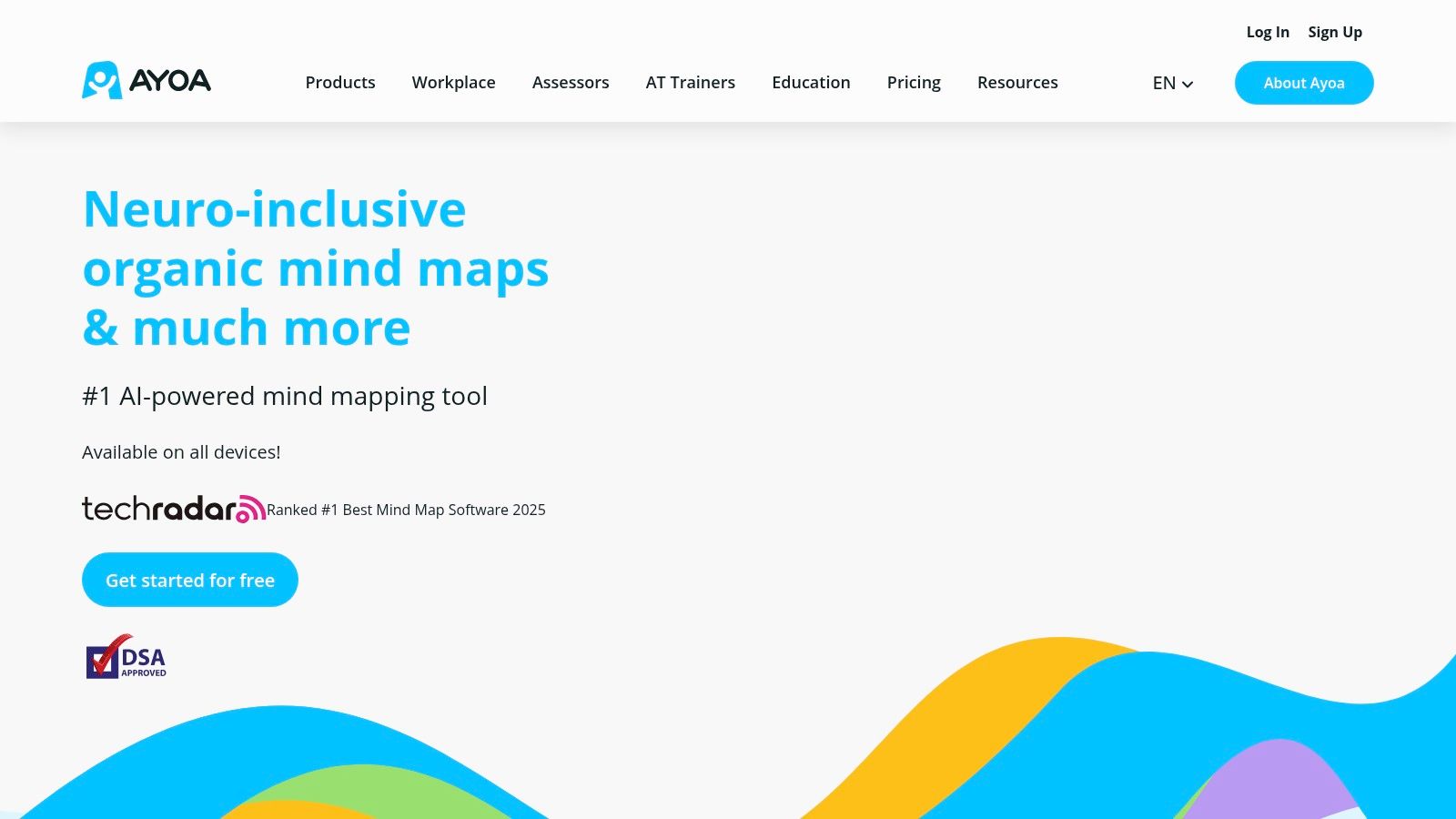
For remote teams, Ayoa's collaborative whiteboards and cross-platform synchronization are essential. Team members, regardless of location, can contribute to brainstorming sessions in real-time, fostering a sense of unity and shared purpose. The "Speed Mind Map" feature allows for rapid-fire idea generation, perfect for those quick brainstorming sessions often needed in fast-paced remote environments. Furthermore, the AI-powered task management helps distributed teams stay organized and on track, assigning and prioritizing tasks efficiently.
Remote tech teams will particularly benefit from Ayoa's organic mind mapping with AI assistance. This feature helps visualize complex technical concepts and break down intricate problems into manageable components. The AI can suggest connections and relationships between ideas, potentially sparking innovative solutions that might otherwise be overlooked. The platform's ability to integrate brainstorming with project management is also crucial for tech teams, allowing them to seamlessly transition from ideation to implementation.
Remote startups, often operating with limited resources and tight deadlines, can leverage Ayoa to maximize efficiency. The AI-powered features assist in prioritizing tasks, optimizing workflows, and ensuring that the team focuses on the most impactful activities. While Ayoa's higher price point might seem daunting for some startups, the potential for increased productivity and faster time-to-market can make it a worthwhile investment.
Ayoa's "organic" mind maps differentiate it from traditional mind mapping tools. They mimic natural thought processes, allowing ideas to branch out and connect in a more fluid and intuitive manner. This organic approach can lead to more creative and dynamic brainstorming sessions. Imagine a remote product development team using Ayoa to brainstorm new features for their app. They can start with a central idea and let the branches grow organically, with the AI suggesting related features, potential roadblocks, and even market research data.
While Ayoa offers significant advantages, it's important to be aware of its potential drawbacks. The platform's robust feature set can lead to a steeper learning curve, requiring some initial investment in training and onboarding. Compared to simpler brainstorming tools, Ayoa's interface can feel slightly overwhelming at first. However, once mastered, the platform’s comprehensive features become invaluable assets.
Pricing for Ayoa is structured on a tiered system, ranging from a limited free plan to more comprehensive paid plans. The paid plans unlock additional features like advanced AI assistance, unlimited mind maps, and team collaboration tools. Users should carefully evaluate their needs and budget to select the most appropriate plan. Specific pricing details can be found on the Ayoa website.
Technical requirements for Ayoa are minimal, as it’s a cloud-based platform accessible through a web browser or dedicated mobile apps for iOS and Android devices. This cross-platform accessibility ensures that team members can participate in brainstorming sessions from anywhere, anytime.
Implementation tips for using Ayoa effectively include:
- Start with a clear objective: Define the goal of your brainstorming session before diving into the platform.
- Utilize the AI features: Explore the AI-powered suggestions for idea generation and task prioritization.
- Embrace the organic mind map structure: Allow ideas to flow naturally and don't be afraid to experiment with different layouts.
- Collaborate actively: Encourage all team members to contribute to the brainstorming process.
- Integrate with existing workflows: Connect Ayoa with other project management tools to streamline your overall workflow.
Ayoa deserves a place on this list because it offers a unique blend of visual brainstorming and AI-powered productivity tools. Its organic mind mapping approach, combined with features like Speed Mind Map and AI-powered task management, makes it a compelling choice for remote teams, tech teams, and startups striving for enhanced creativity and streamlined collaboration. For those seeking an ai brainstorming tool that goes beyond basic mind mapping, Ayoa is definitely worth exploring. You can find more information and sign up for a free trial on their website: https://ayoa.com
5. ChatGPT
ChatGPT, developed by OpenAI, has rapidly become a popular ai brainstorming tool, even though it wasn't explicitly designed for this purpose. Its strength lies in its conversational AI capabilities, enabling it to generate ideas, pose thought-provoking questions, and analyze topics from diverse perspectives. This makes it a valuable asset for both individual brainstorming sessions and guided group brainstorming activities. Its adaptability to various brainstorming methodologies, coupled with its ability to provide instant feedback, sets it apart from traditional brainstorming methods. For remote teams, remote tech teams, and remote startups looking for an accessible and dynamic brainstorming partner, ChatGPT offers a powerful solution.
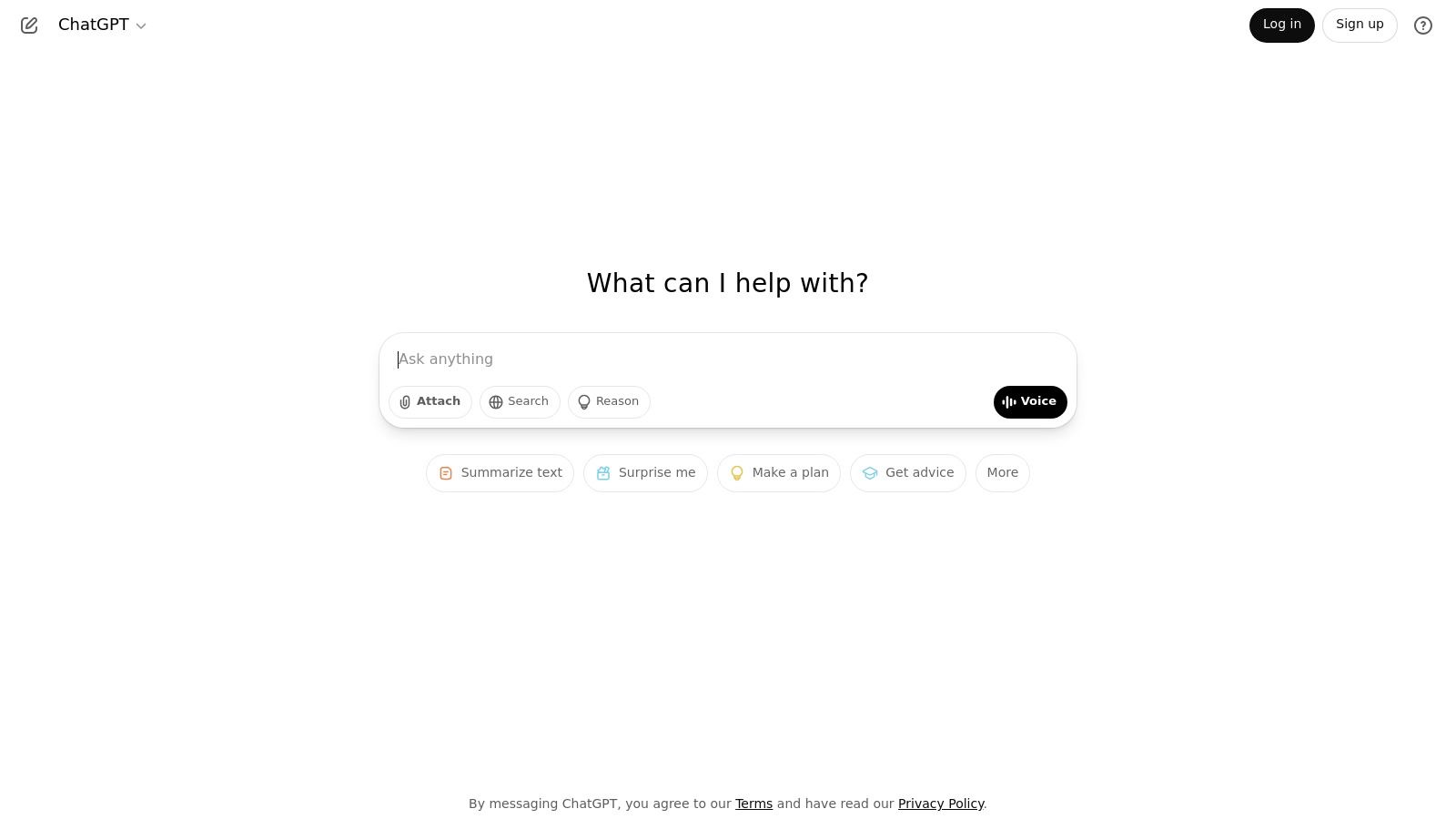
One of the key reasons ChatGPT deserves a spot on this list is its versatility. Imagine a remote tech team grappling with a complex coding challenge. They could use ChatGPT to brainstorm potential solutions by providing it with the problem parameters and asking it to generate different approaches. ChatGPT can then offer multiple coding strategies, explore potential pitfalls, and even generate snippets of code to test. Similarly, a remote startup team could leverage ChatGPT to brainstorm marketing campaign ideas, product names, or even company values. By inputting target demographics and market trends, the team can receive a diverse range of creative suggestions, helping them quickly explore a wide spectrum of possibilities.
ChatGPT’s features make it particularly well-suited for remote teams. Its conversational AI allows for natural language processing, making interaction feel seamless and intuitive. Its multi-perspective analysis feature helps teams avoid groupthink by encouraging the exploration of alternative viewpoints. Furthermore, the ability to provide custom instructions allows users to tailor ChatGPT to specific brainstorming styles, like SCAMPER or the Six Thinking Hats technique. You can learn more about how AI is impacting brainstorming in this article: Learn more about ChatGPT. This adaptability makes it a valuable tool for remote teams working across different time zones and with varying communication styles.
ChatGPT also boasts seamless integration capabilities via its API. This allows developers to integrate ChatGPT into existing workflows and applications, further enhancing its utility for remote tech teams. For example, a team could integrate ChatGPT into their project management software to facilitate brainstorming sessions directly within their project dashboards.
While ChatGPT offers a wealth of benefits, it’s essential to be aware of its limitations. It lacks built-in visual collaboration features like mind maps or virtual whiteboards, which can be helpful for visually organizing ideas during group brainstorming sessions. Furthermore, it doesn't offer built-in organization tools for categorizing and prioritizing generated ideas. Users will need to rely on external tools or manual methods to manage the output from brainstorming sessions. Another potential drawback is the tendency for ChatGPT to generate repetitive ideas if the input prompts are not carefully crafted. Finally, while ChatGPT can function autonomously, it requires human guidance for structured brainstorming sessions to ensure the process remains focused and productive.
ChatGPT operates on a freemium model. OpenAI offers free access with limited usage, while a subscription service, ChatGPT Plus, provides priority access, faster response times, and access to new features. Technical requirements are minimal, as ChatGPT is accessible through a web browser, requiring only an internet connection.
Compared to dedicated brainstorming software with built-in visual and organizational tools, ChatGPT might appear less structured. However, its accessibility, ease of use, and low barrier to entry make it a powerful and cost-effective solution, particularly for smaller remote teams or individuals seeking a quick and dynamic brainstorming partner. By understanding its strengths and limitations, remote teams can leverage ChatGPT effectively to unlock creative potential and drive innovation. Implementing ChatGPT into your workflow is straightforward. Simply visit the OpenAI website (https://chat.openai.com) and create an account. Experiment with different prompts and instructions to discover how ChatGPT can best support your specific brainstorming needs. Remember to clearly define the brainstorming topic, provide context, and experiment with different questioning techniques to elicit the most valuable and creative ideas.
6. Ideaflip: Your Digital Sticky Note Brainstorming Powerhouse
Ideaflip bridges the gap between traditional brainstorming methods and the power of AI. This digital brainstorming tool mimics the familiar experience of using sticky notes on a whiteboard but supercharges the process with intelligent features like AI-powered clustering, automated categorization, and suggested connections between ideas. For remote teams, remote tech teams, and remote startups seeking a straightforward and collaborative brainstorming solution, Ideaflip presents a compelling option. It allows teams scattered across various locations to engage in a dynamic brainstorming session as if they were gathered around the same physical whiteboard.
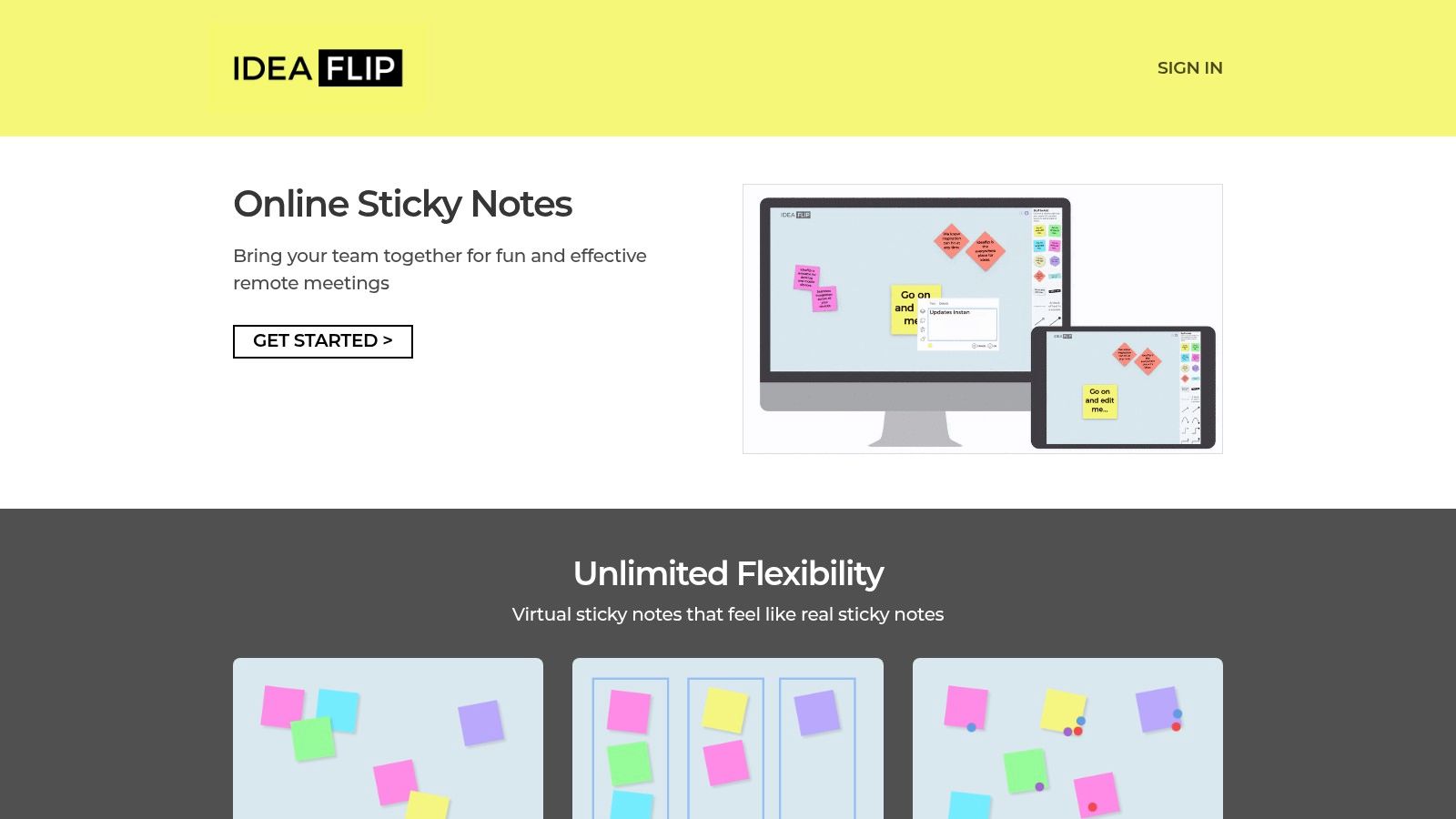
Imagine you’re a remote startup team developing a new mobile app. You can use Ideaflip to brainstorm features, design elements, and marketing strategies. Team members can simultaneously add their ideas as virtual sticky notes, easily moving them around, grouping related concepts, and even drawing connections between them. Ideaflip's AI then steps in to intelligently cluster similar ideas, automatically categorize them, and even suggest connections you might have missed. This allows you to quickly identify key themes, prioritize features, and refine your overall app concept collaboratively, regardless of where your team members are located. The real-time collaboration feature keeps everyone in sync, fostering a sense of shared ownership and stimulating innovative thinking.
Another compelling use case is for remote tech teams brainstorming solutions to a complex coding challenge. Team members can visualize different approaches, algorithms, and potential roadblocks using Ideaflip’s digital sticky notes. The AI-powered clustering feature automatically groups similar solutions, making it easier to identify patterns and potential breakthrough areas. This allows the team to quickly narrow down the most promising approaches and avoid redundant efforts. The ability to export the brainstorming session in various formats (like a PDF or image file) provides a readily shareable record of the team's collective thinking, which can be invaluable for future reference or presentations.
Compared to other ai brainstorming tools, Ideaflip excels in its simplicity and focus on core brainstorming functionalities. While tools like Miro offer a wider range of features, including mind mapping and project management, Ideaflip’s streamlined interface and affordable pricing make it an attractive alternative, especially for teams primarily focused on brainstorming activities. However, this focus comes with some trade-offs. Ideaflip’s project management capabilities are basic compared to more comprehensive platforms, and its integration options are somewhat limited.
Implementing Ideaflip is straightforward. Simply sign up for an account on their website (https://ideaflip.com) and create a new board. Invite your team members to collaborate in real time. You can customize the board with different background colors and sticky note designs to match your branding or preference. Familiarize yourself with the AI-powered clustering and categorization features to maximize their impact on your brainstorming sessions. While Ideaflip’s intuitive design makes it easy to use, taking the time to explore its functionalities will ensure you harness its full potential.
While specific pricing details are readily available on their website, Ideaflip generally offers competitive and affordable pricing plans suitable for small teams and startups. Regarding technical requirements, Ideaflip is a web-based application, so it runs on any device with a modern web browser and a stable internet connection. No specific software installation is required, making it accessible and convenient for remote teams working across different operating systems.
In conclusion, Ideaflip earns its spot on this list as an effective and user-friendly ai brainstorming tool. Its familiar sticky note interface, combined with AI-powered features, creates a productive and engaging brainstorming experience. While it may lack some advanced features found in other tools, its simplicity, affordability, and focus on core brainstorming functionalities make it a valuable asset for remote teams, remote tech teams, and remote startups looking to unlock their collective creative potential.
7. Stormboard: AI-Powered Brainstorming for Business Teams
Stormboard positions itself as a powerful AI brainstorming tool specifically designed for business teams looking to streamline their ideation processes. It goes beyond simple idea capture by offering AI-powered features that help synthesize information, automate reporting, and intelligently categorize brainstorming output. This structured approach, coupled with integrations for popular business tools, makes Stormboard a compelling option for teams that value organization and efficiency in their brainstorming sessions. This makes it an excellent ai brainstorming tool for remote, tech-focused, and startup teams seeking a robust platform.

For remote teams, Stormboard offers a centralized digital workspace that transcends geographical limitations. Team members can contribute ideas, participate in discussions, and vote on priorities regardless of location. Its asynchronous nature allows for flexible participation, catering to different time zones and work styles. This is particularly beneficial for distributed tech teams often working across continents.
Remote startups, often operating with limited resources and tight deadlines, can leverage Stormboard’s structured methodologies and AI-powered features to accelerate the brainstorming process. Features like automated reporting and idea synthesis save valuable time and effort, enabling teams to focus on refining and implementing the best ideas quickly. The integration with other business tools further streamlines workflows, maximizing productivity.
Stormboard offers a variety of pre-built brainstorming templates tailored to different business needs, such as SWOT analysis, product roadmapping, and design thinking. This structured approach ensures that brainstorming sessions remain focused and productive. The AI-powered idea synthesis feature helps identify key themes and patterns within the generated ideas, facilitating a deeper understanding of the collective thinking. Automated reporting then collates all the information into a concise, shareable format, simplifying the process of communicating insights and decisions to stakeholders.
While Stormboard excels in providing a structured, business-oriented approach to brainstorming, it’s essential to consider its limitations. The platform can be relatively expensive for smaller teams or startups on a tight budget. The free plan has limited functionality and the higher-tier plans, while offering more features, can represent a significant investment. Furthermore, while Stormboard offers a good selection of templates, its visual flexibility for customizing boards is less extensive than some other AI brainstorming tools on the market. Some users might find the learning curve for the more advanced AI features a bit steep.
Compared to more freeform digital whiteboarding tools like Miro or Mural, Stormboard prioritizes structure and process. While this can be beneficial for business-focused brainstorming, teams seeking a more visually driven or flexible approach might find other tools more suitable. However, Stormboard's integration with business tools like Microsoft Teams, Slack, and Google Drive makes it a powerful asset for teams already invested in these ecosystems. This seamless integration streamlines workflows and facilitates collaboration.
Pricing: Stormboard offers a free plan with limited features. Paid plans start at $10 per user per month and scale upwards depending on the features and number of users required. Specific pricing details are available on the Stormboard website.
Technical Requirements: Stormboard is a web-based platform, accessible from any modern web browser. No specific software downloads or installations are required.
Implementation Tips:
- Start with a template: Leverage Stormboard's extensive template library to ensure a structured and focused brainstorming session.
- Utilize the voting and prioritization features: These tools help teams quickly identify the most promising ideas.
- Integrate with existing business tools: Connect Stormboard to your existing workflow for seamless collaboration and data sharing.
- Explore the AI-powered features: Take advantage of idea synthesis and automated reporting to save time and gain deeper insights.
Stormboard stands out as a powerful ai brainstorming tool for business teams looking for a structured, data-driven approach to idea generation. Its AI-powered features, combined with its business-focused templates and integrations, make it a valuable asset for remote teams, tech teams, and startups looking to streamline their brainstorming process and drive innovation. For those willing to invest in a premium platform, Stormboard offers a robust solution for efficient and organized brainstorming. You can explore Stormboard and its features further on their website: https://stormboard.com
8. Notion AI
Notion AI is more than just a note-taking app; it's a powerful all-in-one workspace that integrates artificial intelligence to supercharge your brainstorming sessions. While not exclusively an ai brainstorming tool, its flexible features and AI capabilities make it a strong contender for teams seeking a centralized platform for ideation, planning, and execution. From generating initial concepts to fleshing out detailed plans, Notion AI empowers remote teams, tech teams, and startups to collaborate and innovate effectively.
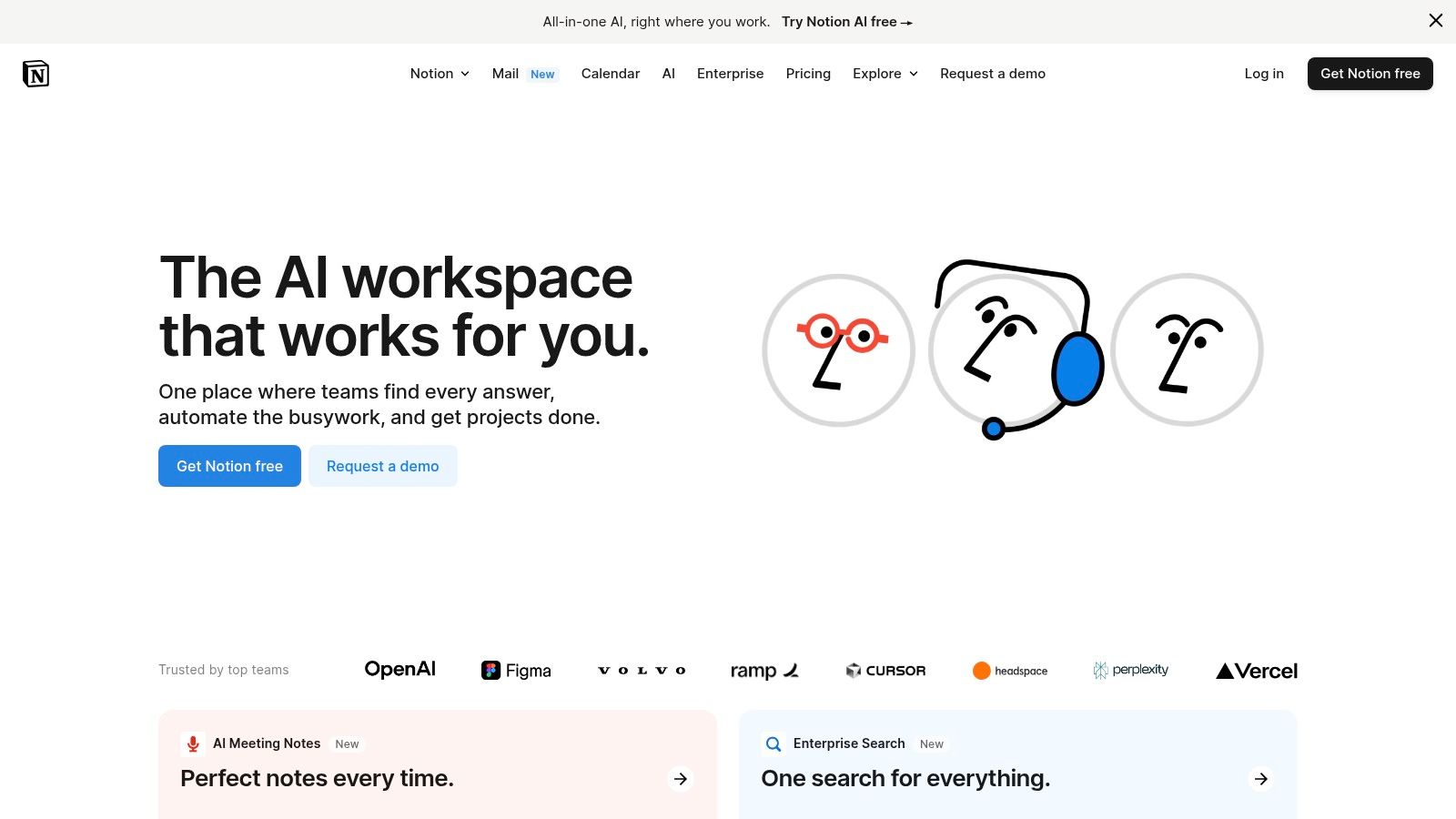
One of Notion AI's key strengths lies in its customizability. Users can create bespoke brainstorming templates and databases tailored to their specific needs. Imagine a remote marketing team brainstorming campaign ideas. They could set up a database with properties like "Target Audience," "Campaign Goal," "Key Message," and "Budget." Then, using Notion AI's idea generation feature, they can quickly populate this database with potential campaign concepts, ensuring a structured and organized approach to brainstorming. This is a significant advantage over simpler ai brainstorming tools that might lack such robust organizational features.
For remote tech teams, Notion AI can be invaluable for collaborative coding projects. Teams can brainstorm feature ideas, document code snippets, and track bugs all within a unified workspace. The AI writing assistance can help with drafting technical documentation or creating user stories. The ability to seamlessly transition from brainstorming to project management makes Notion AI a powerful tool for agile development.
Startups, often operating with limited resources and time, can leverage Notion AI to streamline their brainstorming processes. Imagine a remote startup team developing a new mobile app. They can use Notion AI to generate innovative app features, outline user flows, and even draft marketing copy. The integrated nature of the platform eliminates the need to switch between multiple tools, saving valuable time and enhancing overall productivity. While other dedicated ai brainstorming tools might offer specific features, Notion AI’s comprehensive approach provides a holistic solution for managing the entire project lifecycle.
Notion AI's pricing structure is tiered. The free plan offers limited AI features, suitable for individual users exploring the platform. For teams requiring more extensive AI capabilities, a paid subscription is necessary. While this might be a con for some, the value proposition of having a unified workspace with integrated AI features often outweighs the cost, especially when compared to using multiple specialized tools.
Implementing Notion AI for brainstorming can be incredibly beneficial, but it requires some initial setup. Creating custom templates and databases tailored to your team's specific workflows is crucial. For example, a remote sales team might create a template for brainstorming new sales strategies, including fields for target market, sales pitch, and projected revenue. This structured approach ensures that all brainstorming sessions are focused and productive. While there’s a learning curve associated with mastering Notion's features, the long-term benefits in terms of organization and productivity are significant.
While Notion AI boasts a robust feature set, it does have some drawbacks. Setting up the system initially can be complex, especially for users unfamiliar with Notion’s database functionality. The learning curve can be steep, requiring time and effort to master the platform's intricacies. Furthermore, the AI features require a separate subscription, which might be a barrier for some users. Finally, while Notion AI offers excellent organizational capabilities, its performance can sometimes lag when dealing with large databases.
Compared to dedicated ai brainstorming tools, Notion AI might not offer the same level of specialized features. However, its strength lies in its integration with a comprehensive workspace, enabling seamless transitions from brainstorming to project planning, execution, and documentation. For remote teams, tech teams, and startups seeking an all-in-one solution, Notion AI’s versatility and customizability make it a compelling choice. Its website, https://notion.so, provides comprehensive documentation and resources to help users get started. Ultimately, despite its complexity, Notion AI’s ability to combine powerful AI capabilities with a highly customizable workspace makes it a valuable ai brainstorming tool for teams looking to enhance their creative process and streamline their workflows.
AI Brainstorming Tools Overview
| Tool | Core Features / Unique Selling Points | User Experience & Quality ★ | Target Audience 👥 | Value & Pricing 💰 | Recommended For 🏆 |
|---|---|---|---|---|---|
| Bulby | AI-powered guided brainstorming ✨, anonymous ideas, automatic summaries | ★★★★☆ seamless, bias-free, guided | Remote teams & startups 🏢 | 14-day trial, contact for pricing 💰 | Best for remote, structured ideation 🏆 |
| Milanote | Visual boards, AI content suggestions, templates | ★★★★☆ intuitive, creative focus | Creative professionals 👩🎨 | Mid-high pricing 💰💰 | Visual organization for creatives |
| Miro | Infinite canvas, AI clustering, 100+ integrations | ★★★★☆ strong collaboration | Medium to large teams 👥 | Free plan; paid tiers vary 💰 | Large team collaboration |
| Ayoa | Organic mind maps, AI task management | ★★★★☆ robust but complex | Project managers & creatives 👥 | Higher pricing 💰💰💰 | Mind mapping + project management |
| ChatGPT | Conversational AI, idea generation, multi-style | ★★★★☆ accessible, diverse ideas | Individuals & teams 👤👥 | Free & subscription available 💰 | AI brainstorming companion |
| Ideaflip | Digital sticky notes, AI clustering | ★★★☆☆ simple, focused tool | Small teams & individuals 👥 | Affordable 💰 | Sticky note style brainstorming |
| Stormboard | AI idea synthesis, reporting, business integrations | ★★★★☆ business professional | Business teams & consultants 👥 | Higher cost for small teams 💰💰 | Structured business brainstorming |
| Notion AI | AI writing/idea generation, customizable templates | ★★★★☆ all-in-one workspace | Knowledge workers & teams 👥 | Separate AI subscription 💰 | Customizable workspace + AI |
Elevate Your Brainstorming: Choosing the Right AI Tool
From mind-mapping with Milanote and Miro to leveraging the power of ChatGPT and Notion AI, the range of AI brainstorming tools available today is impressive. This article explored eight powerful options—Bulby, Milanote, Miro, Ayoa, ChatGPT, Ideaflip, Stormboard, and Notion AI—each designed to enhance collaborative ideation and streamline the brainstorming process for remote teams. Remember, the most important takeaways when selecting an AI brainstorming tool are your team's specific needs, budget, and overall goals.
For remote teams, especially in tech startups, these tools offer a valuable way to bridge geographical distances and foster a collaborative environment. Consider whether you need a tool focused on visual brainstorming like Miro or a more text-based solution like ChatGPT. Implementing these tools effectively also requires clear communication within your team and establishing best practices for brainstorming sessions. Beyond brainstorming, if you're interested in exploring how AI is transforming learning and development, check out this comprehensive list of the best AI tools for education in 2025 from Tran Development.
The right AI brainstorming tool can truly revolutionize your team's creative output and problem-solving capabilities. Embrace the power of AI and watch your innovative ideas flourish. Want to supercharge your brainstorming sessions with an AI-powered assistant? Check out Bulby, an AI brainstorming tool designed to spark creativity and streamline your workflow. It's a powerful option for teams looking to take their brainstorming to the next level.

